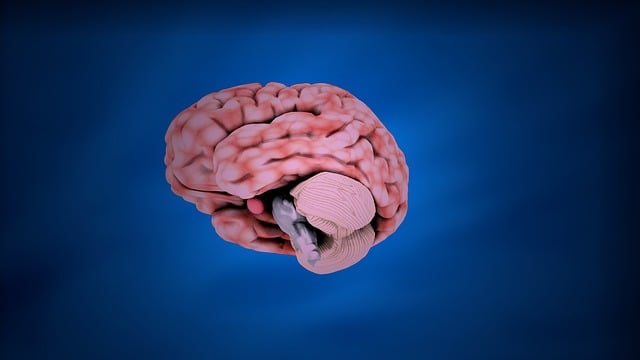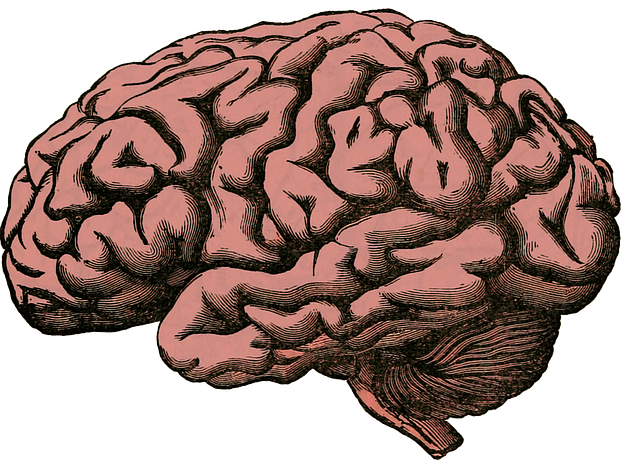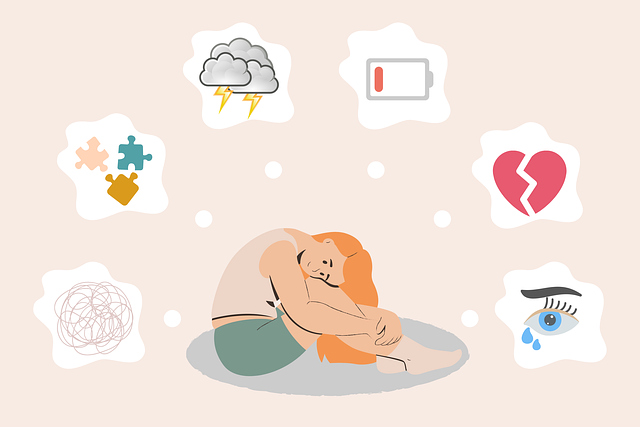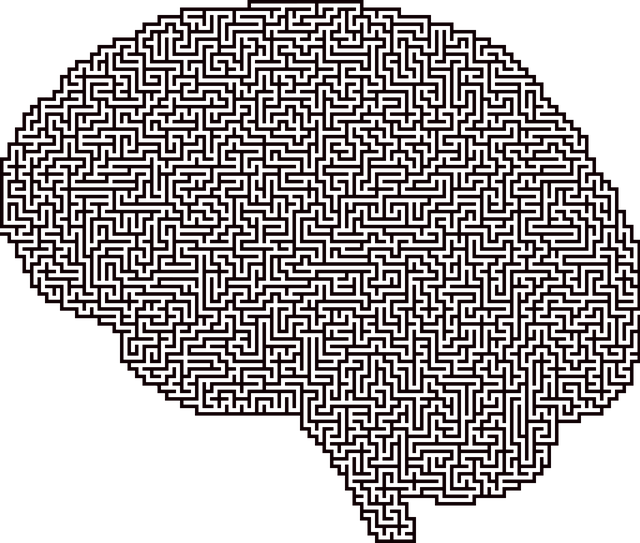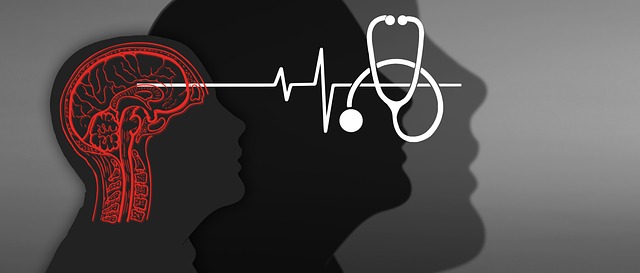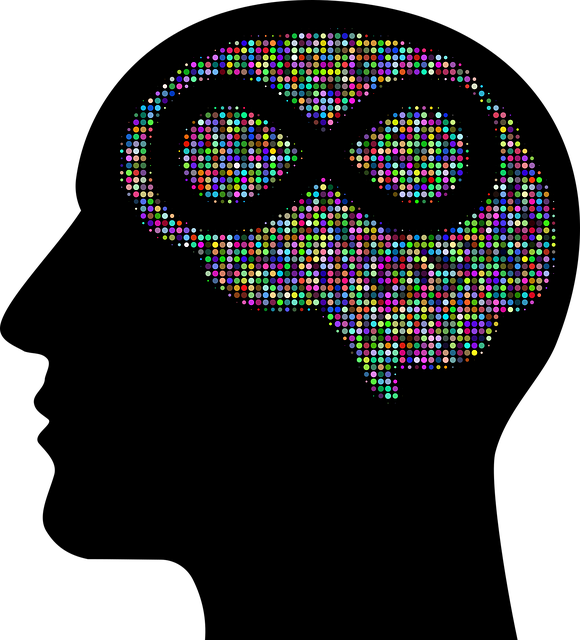In the historical context of media representation, mental illness has been plagued by stigma and stereotypes. However, a significant shift is underway, driven by increased awareness and advocacy for better depiction, including diverse conditions like depression, anxiety, schizophrenia, and Centennial Developmental Disability (CDD). This evolution promotes Mental Health Awareness, Mood Management, and Self-Esteem Improvement among audiences. Media storytelling, through initiatives like Mental Wellness Journaling Exercises and Community Outreach Programs, can break down barriers for individuals seeking CDDT support. Centennial Developmental Disability Therapy offers a novel approach to mental health support for developmental disabilities, focusing on self-acceptance, resilience building, and personal growth. Collaborating with experts ensures nuanced representations in media, promoting understanding and empathy while providing crisis intervention tools. Community organizations and professionals play vital roles in transforming public perceptions through diverse, inclusive narratives and educational programs.
In today’s media landscape, the representation of mental illness is more important than ever. This article explores the historical perspective of mental illness depiction in media, its impact on public perception and stigma, and presents alternative approaches like Centennial Developmental Disability Therapy. We discuss strategies for accurate and empathetic media portrayals, emphasizing collaboration with community and professionals to foster positive change. By examining these aspects, we aim to enhance understanding and reduce stigma associated with mental health issues.
- Understanding Mental Illness Representation in Media: A Historical Perspective
- The Impact of Stereotyped Portrayals on Public Perception and Stigma
- Centennial Developmental Disability Therapy: An Alternative Approach
- Strategies for Accurate and Empathetic Media Depictions
- Fostering Positive Change: Collaborating with Community and Professionals
Understanding Mental Illness Representation in Media: A Historical Perspective

In the historical narrative of media representation, mental illness has often been portrayed through a lens of stigma and misconception. For decades, media platforms have perpetuated stereotypes, presenting individuals with mental health conditions as dangerously unpredictable or utterly incomprehensible. However, recognizing these harmful depictions is the first step towards change. A significant shift in perspective has begun, driven by increasing public awareness and advocacy for better representation. Today, there’s a growing understanding of mental illness as complex, multifaceted, and treatable—a far cry from the simplistic, sensationalized narratives of yesteryear.
This evolution in media portrayal is particularly notable in recent decades, coinciding with the rise of accessible information and the destigmatization movements. The push for accurate representation has led to more nuanced stories featuring characters with various mental health challenges, including conditions such as depression, anxiety, schizophrenia, and even less commonly discussed disorders like Centennial Developmental Disability (CDD). Such developments not only foster Mental Health Awareness but also encourage effective Mood Management and Self-Esteem Improvement among viewers.
The Impact of Stereotyped Portrayals on Public Perception and Stigma

The media plays a pivotal role in shaping public perception and understanding of mental illness. Stereotyped portrayals, often perpetuated through film, television, and news media, can have profound effects on society’s attitude towards individuals living with various conditions, including developmental disabilities. When media characters are reduced to simplistic, one-dimensional stereotypes, it reinforces negative beliefs and contributes to the ongoing stigma associated with mental health issues. This is particularly concerning as accurate representation is a powerful tool in challenging societal barriers and promoting empathy.
For instance, depicting someone with a developmental disability solely through a lens of tragedy or as an object of pity further isolates these individuals and overlooks their capabilities. In contrast, nuanced and authentic representations, such as those found in recent media initiatives, offer a more comprehensive view. Encouraging conversations around mental wellness through Mental Wellness Journaling Exercise Guidance and Community Outreach Program Implementation can be catalyzed by responsible media storytelling. By presenting characters with complex personalities, strengths, and challenges, the media can inspire understanding, foster compassion, and contribute to breaking down barriers, ultimately benefiting those seeking support for their developmental disability therapy needs.
Centennial Developmental Disability Therapy: An Alternative Approach

Centennial Developmental Disability Therapy (CDDT) offers a promising alternative approach to addressing mental health challenges, particularly for individuals with developmental disabilities. This innovative therapy focuses on fostering self-acceptance, building resilience, and promoting personal growth through tailored interventions. Unlike traditional talk therapies, CDDT empowers clients by teaching them practical coping strategies and enhancing their problem-solving abilities, enabling them to navigate life’s complexities with greater ease.
By integrating evidence-based practices with a person-centered approach, CDDT bridges the gap between therapeutic support and independent living. This method not only benefits the individual but also contributes to broader societal changes. Public Awareness Campaigns Development and Healthcare Provider Cultural Competency Training can play a pivotal role in promoting understanding and acceptance of developmental disabilities, creating a more inclusive environment. Additionally, Stress Management Workshops Organization within communities can empower individuals with tools to manage stress and promote mental well-being, ultimately reducing the stigma associated with seeking help.
Strategies for Accurate and Empathetic Media Depictions

Media has a significant impact on shaping societal perceptions about mental health. To challenge stereotypes and promote understanding, accurate and empathetic depictions are crucial. This involves engaging experts like Centennial Developmental Disability Therapists to ensure authenticity in portrayal. Such collaboration can provide insights into the nuances of various conditions, fostering more nuanced storytelling.
Depicting characters with mental illness as three-dimensional individuals, showcasing their strengths and struggles alike, is essential. Promoting confidence boosting narratives alongside highlighting the complexities of mental health journeys, can offer a balanced view. Moreover, incorporating crisis intervention guidance and conflict resolution techniques into storylines can provide viewers with tools to support themselves or others during challenging times, fostering a more compassionate society.
Fostering Positive Change: Collaborating with Community and Professionals

In the media’s ability to shape public perception, fostering positive change through collaboration becomes a powerful tool for challenging negative representations of mental illness. Engaging with both community members and professionals is essential in this process. Community organizations play a crucial role by providing platforms for voices often left unheard—those living with mental health challenges. They can facilitate discussions, organize campaigns, and offer support networks, ensuring that narratives are diverse, inclusive, and accurate.
Professionals, particularly therapists like those specializing in Centennial Developmental Disability Therapy, have a unique perspective to share. They can contribute by participating in media projects, offering expert insights, and designing Mental Health Education Programs that promote understanding and empathy. Integrating Social Skills Training and Resilience Building techniques into these programs empowers individuals with mental health issues while challenging societal stigmas. Such collaborations ensure that media representation moves beyond stereotypes, fostering a more supportive and informed society.
In conclusion, accurate representation of mental illness in media is paramount in challenging stereotypes and fostering empathy. By adopting alternative approaches like Centennial Developmental Disability Therapy and implementing strategies for empathetic depictions, we can significantly reduce stigma and promote positive change. Collaborating with community members and professionals is crucial to ensure these portrayals reflect the diversity and complexity of lived experiences, ultimately leading to a more inclusive and supportive society.





